Embark on a sweet journey through Singapore’s diverse culinary landscape, where every dessert is a delicious reflection of the city-state’s multicultural heritage. From the bustling hawker centers to the cozy cafes, Singapore offers an enticing array of sweet delights that celebrate
its rich cultural tapestry. Indulge in the iconic flavors of Chendol’s coconut milk and green rice flour jelly, or savor the comforting warmth of Pulut Hitam’s black glutinous rice porridge. Whether it’s the creamy richness of Durian Pengat or the delicate sweetness of Ondeh-Ondeh, Singaporean desserts promise a sensory adventure that captures the heart and soul of this vibrant culinary destination.
Ready to try Singaporean Desserts!
Chendol
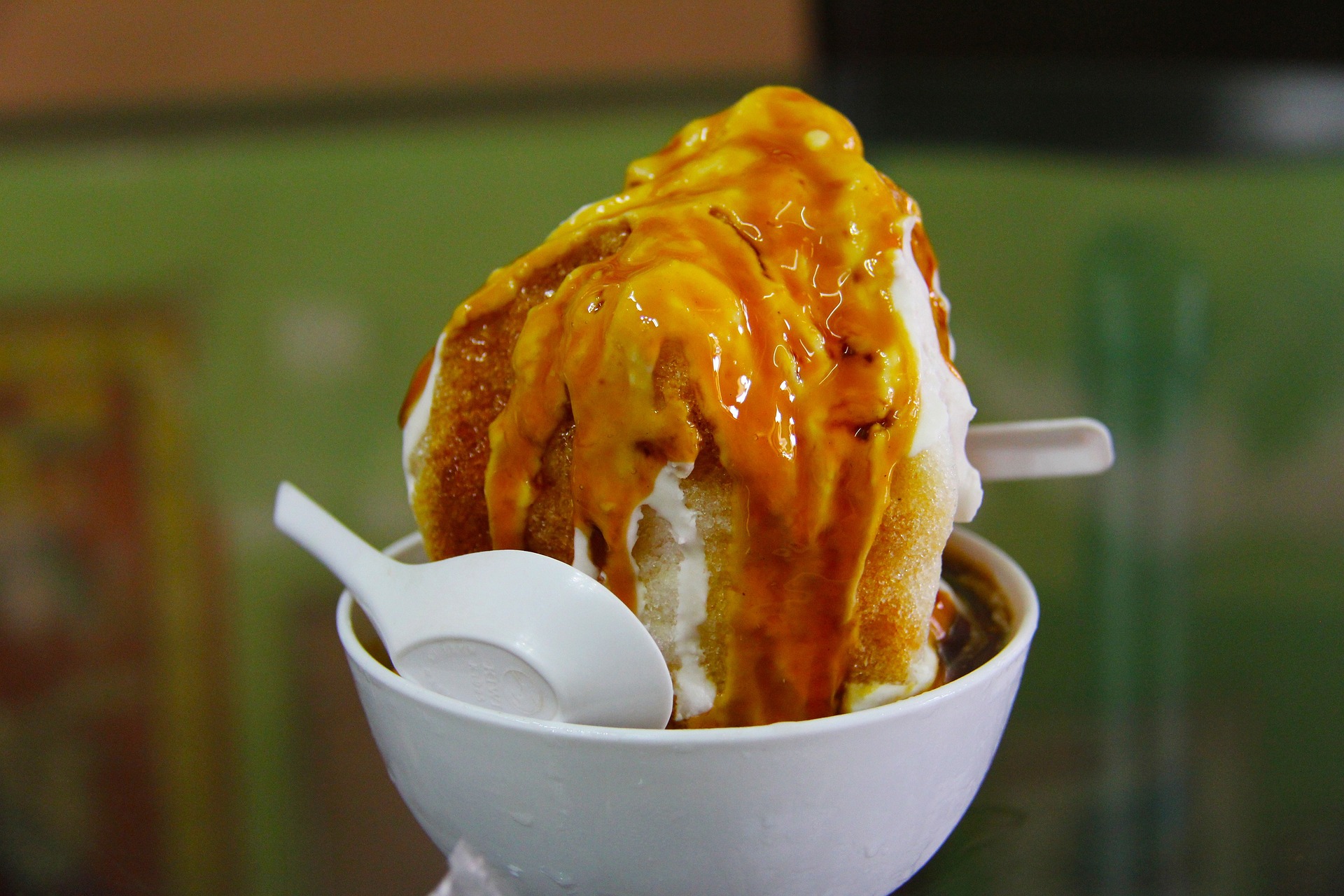
Chendol, a beloved Singaporean dessert, tantalizes taste buds with its refreshing blend of green rice flour jelly, coconut milk, and palm sugar syrup. Topped with red beans for texture, this iconic treat is a delightful way to beat the tropical heat of Singapore.
5 Key Facts
- Origin: Chendol is believed to have originated in Southeast Asia, with its roots tracing back to Indonesia and Malaysia before becoming popular in Singapore.
- Ingredients: The key ingredients of Chendol include green rice flour jelly (made from rice flour and pandan extract), coconut milk, palm sugar syrup (gula melaka), and sometimes red beans.
- Variations: While the classic Chendol includes green rice flour jelly, variations may include additions like sweet corn, grass jelly, or even durian for a unique twist on the traditional recipe.
- Cultural Significance: Chendol is not only a popular dessert but also holds cultural significance, often served during festivals and special occasions in Singapore and other Southeast Asian countries.
- Refreshing and Cooling: With its combination of coconut milk and icy shaved ice, Chendol is not only delicious but also serves as a refreshing and cooling treat, perfect for Singapore’s hot and humid climate.
Ice Kacang (or ABC)
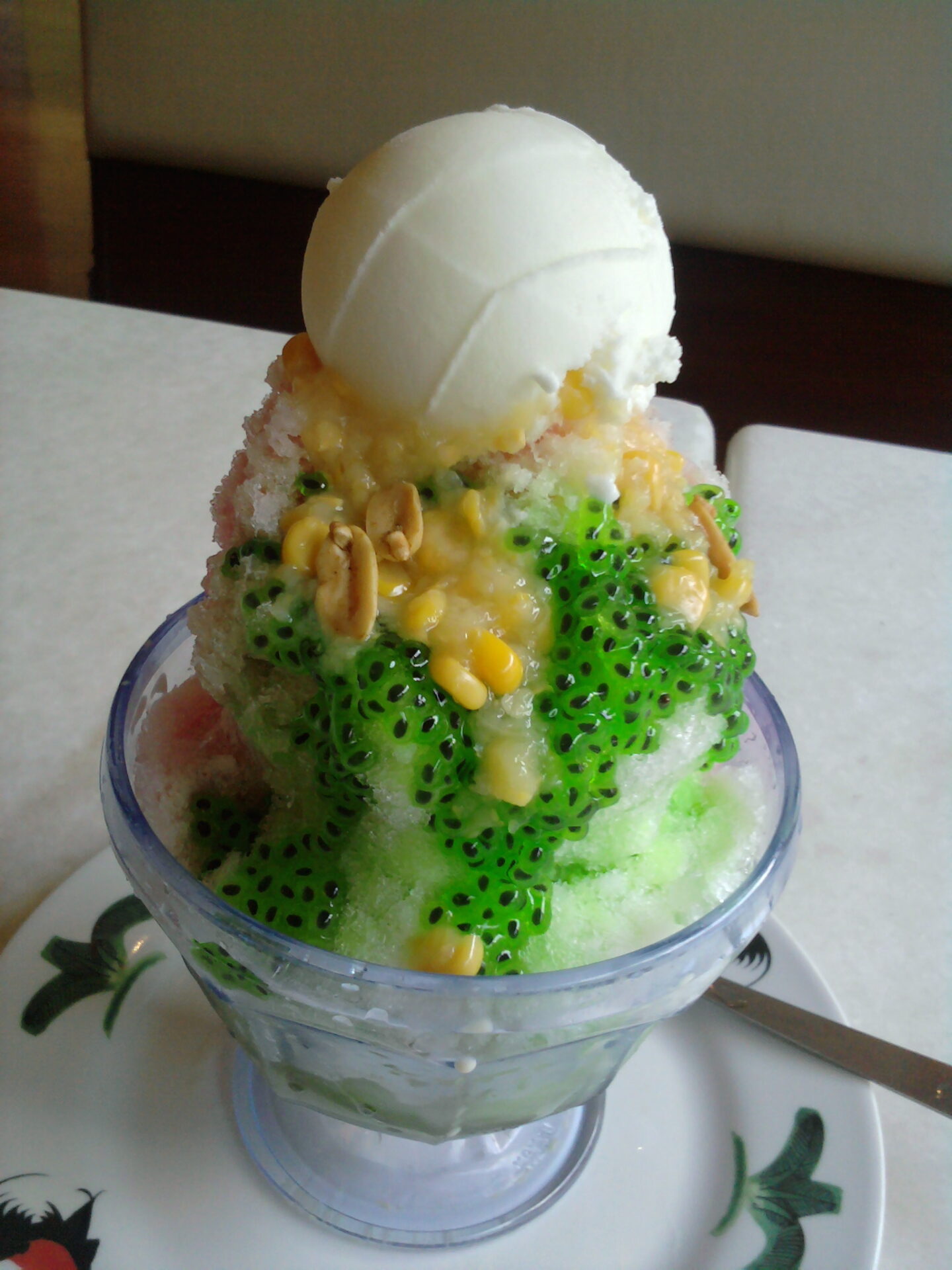
Ice Kacang, also known as ABC (Ais Batu Campur), is a colorful Malaysian and Singaporean dessert. It features shaved ice topped with a medley of ingredients such as sweet corn, red beans, grass jelly, and colorful syrups like rose or pandan, offering a refreshing and delightful sensory experience.
5 Key Facts
- Cultural Fusion: Ice Kacang is a delightful fusion of Malay, Chinese, and Indian culinary influences, reflecting the multicultural heritage of Malaysia and Singapore.
- Colorful Presentation: This dessert is known for its vibrant presentation, with layers of shaved ice topped with an assortment of colorful ingredients like red beans, sweet corn, grass jelly, and colorful syrups.
- Refreshing Taste: Ice Kacang is renowned for its refreshing taste, making it a popular choice for cooling down in the tropical climates of Malaysia and Singapore.
- Customization: While the basic ingredients remain consistent, variations in toppings and syrups allow for customization according to personal preference or regional differences.
- Cultural Significance: Ice Kacang holds cultural significance, often enjoyed during festive celebrations, special occasions, or simply as a refreshing treat on hot days, bringing people together to indulge in its sweet and icy goodness.
Tau Huay (or Douhua)
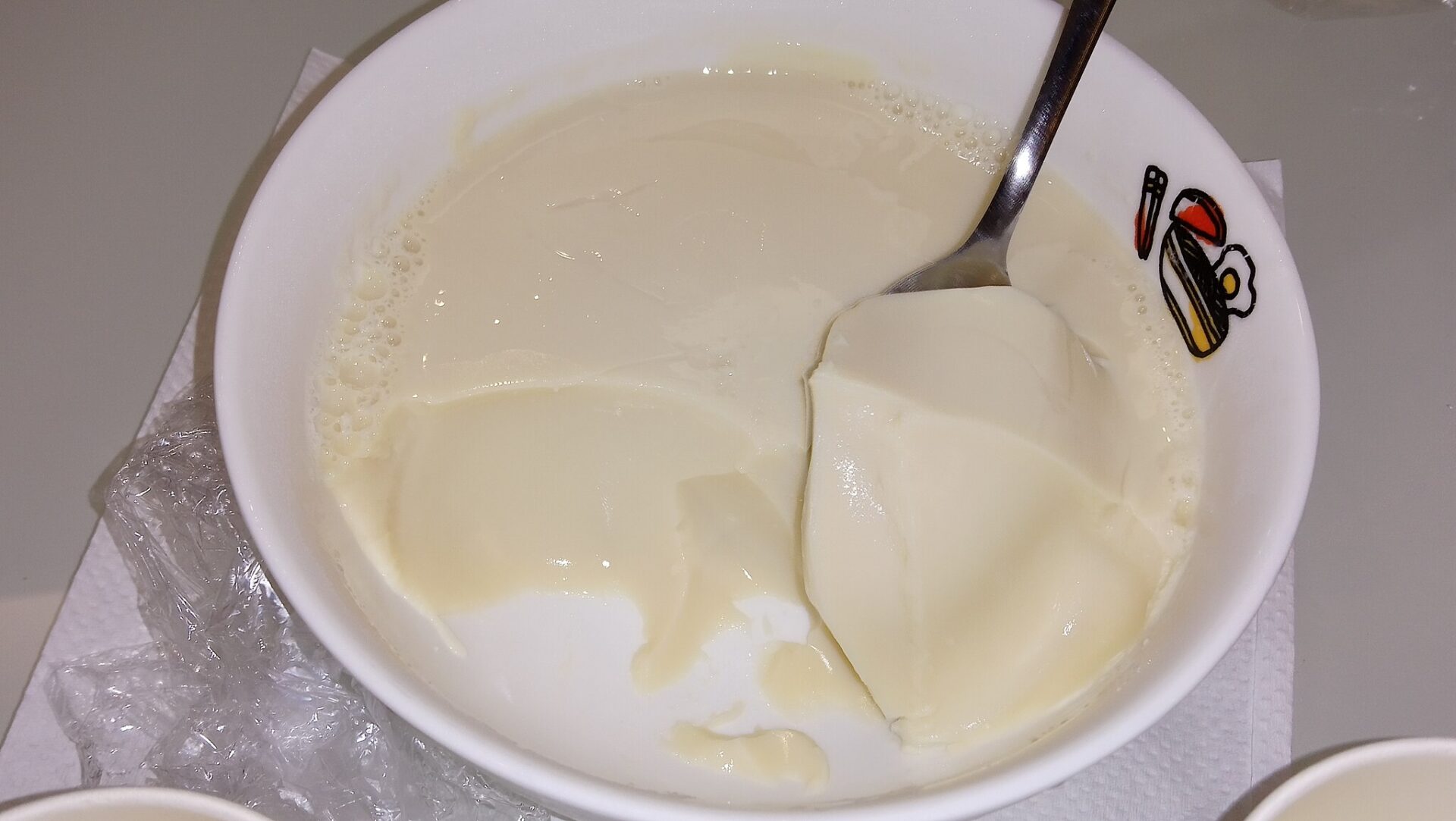
Tau Huay, also known as Douhua, is a traditional Chinese dessert popular in Singapore. This silky-smooth tofu pudding is served with a clear syrup, typically flavored with ginger or pandan. It’s light, delicate, and often enjoyed as a comforting snack or dessert in Singaporean cuisine.
5 Key Facts
- Tofu Pudding: Tau Huay, also known as Douhua, is a soft and silky tofu pudding made from coagulated soy milk.
- Chinese Origin: Originating from China, Tau Huay has become a beloved dessert in many parts of Asia, including Singapore.
- Versatility: While traditionally served with a clear syrup flavored with ginger or pandan, Tau Huay can also be enjoyed with toppings like red bean paste or grass jelly.
- Texture: Its delicate and silky texture is achieved through the coagulation process of soy milk, resulting in a smooth and creamy pudding-like consistency.
- Popular Dessert: Tau Huay is a popular dessert and snack in Singapore, often enjoyed both hot and cold, offering a refreshing and comforting treat for locals and visitors alike.
Kaya Toast with Soft-Boiled Eggs
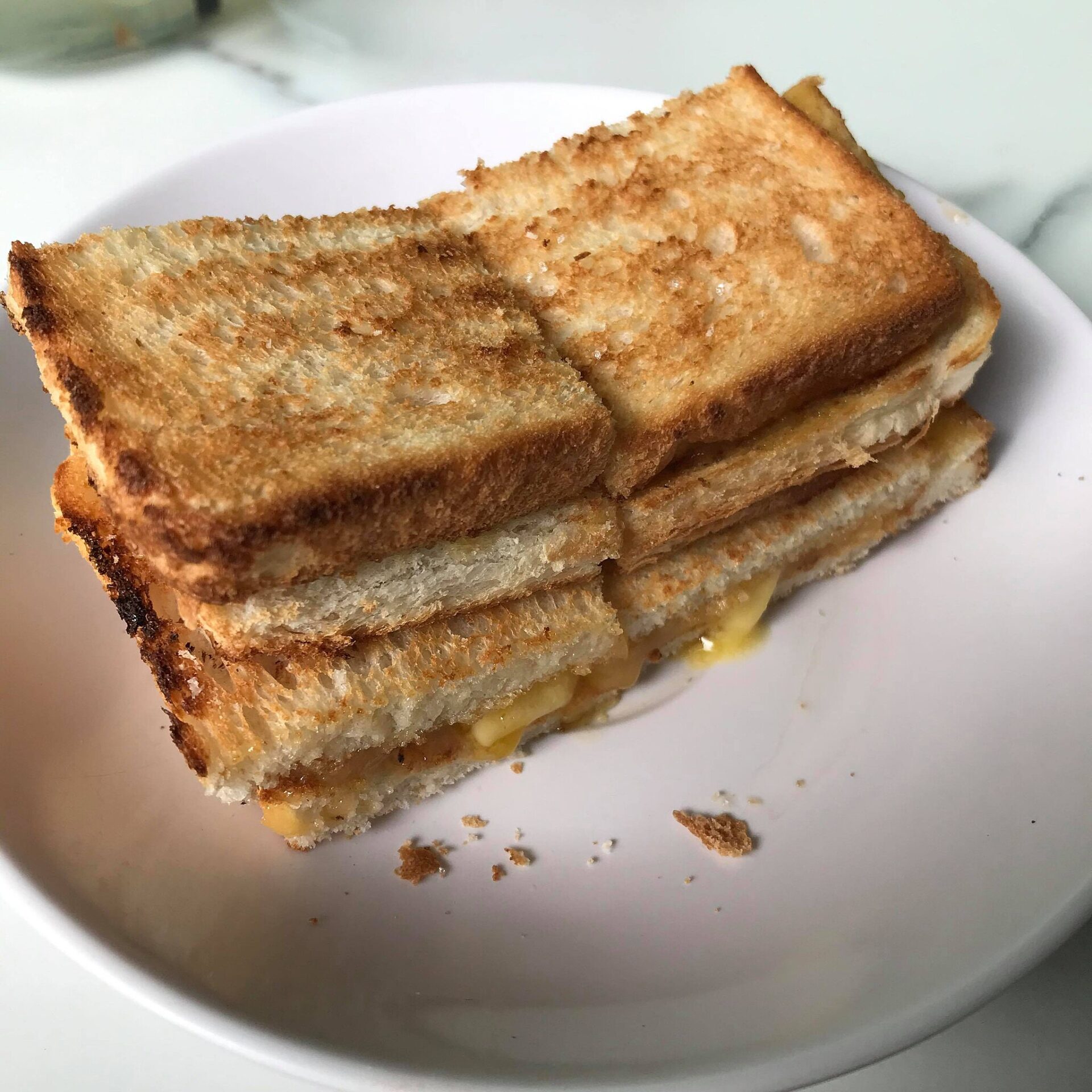
Kaya Toast with Soft-Boiled Eggs is a quintessential Singaporean breakfast or snack. It consists of toasted bread slathered with kaya, a sweet coconut and egg jam, paired with soft-boiled eggs drizzled with soy sauce and sprinkled with white pepper. This sweet-savory combination is a local favorite.
5 Key Facts
- Traditional Breakfast: Kaya Toast with Soft-Boiled Eggs is a staple breakfast dish in Singapore, enjoyed by locals and visitors alike.
- Kaya Spread: The toast is typically slathered with kaya, a sweet and fragrant jam made from coconut milk, eggs, sugar, and pandan leaves.
- Soft-Boiled Eggs: Soft-boiled eggs are a common accompaniment, often seasoned with soy sauce and white pepper for a savory kick.
- Cultural Icon: This dish holds cultural significance in Singapore, representing a fusion of Chinese, Malay, and Indian culinary influences.
- Coffee Shop Culture: It’s commonly found in traditional Singaporean coffee shops known as kopitiams, where it’s served alongside a cup of local kopi (coffee) or teh (tea).
Durian Pengat
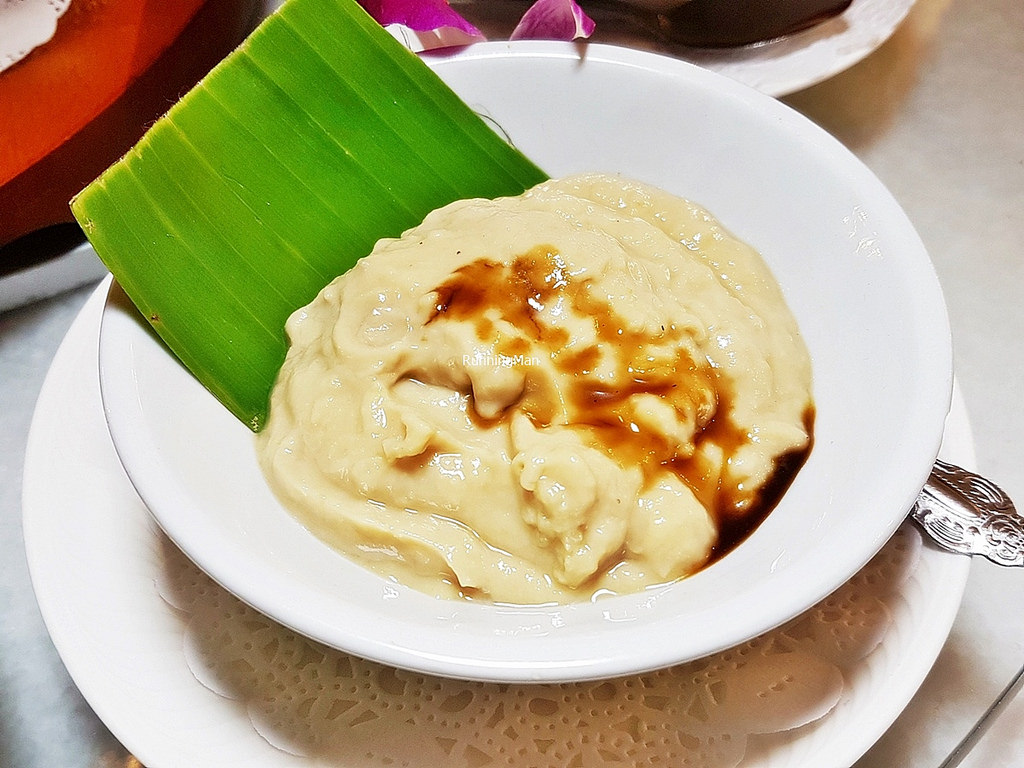
Durian Pengat is a decadent Singaporean dessert that celebrates the unique flavor of durian, the “king of fruits.” It’s made by blending durian flesh with coconut milk and palm sugar, resulting in a creamy and aromatic dessert that delights durian enthusiasts.
5 Key Facts
- Durian Delicacy: Durian Pengat is a popular dessert in Singapore, showcasing the distinctive flavor of durian, a fruit known for its strong aroma and rich taste.
- Creamy Texture: This dessert is characterized by its creamy consistency, achieved by blending durian flesh with coconut milk to create a smooth and luxurious texture.
- Sweetened with Palm Sugar: Palm sugar, known locally as gula melaka, is used to sweeten Durian Pengat, adding a caramel-like sweetness that complements the richness of the durian.
- Cultural Significance: Durian holds cultural significance in Southeast Asia, and Durian Pengat is often enjoyed during festive occasions and celebrations as a symbol of abundance and prosperity.
- Satisfies Durian Cravings: For durian enthusiasts, Durian Pengat offers a delicious way to indulge in the beloved fruit’s flavor without the hassle of dealing with its thorny husk, making it a delightful treat for durian lovers.
Pandan Cake
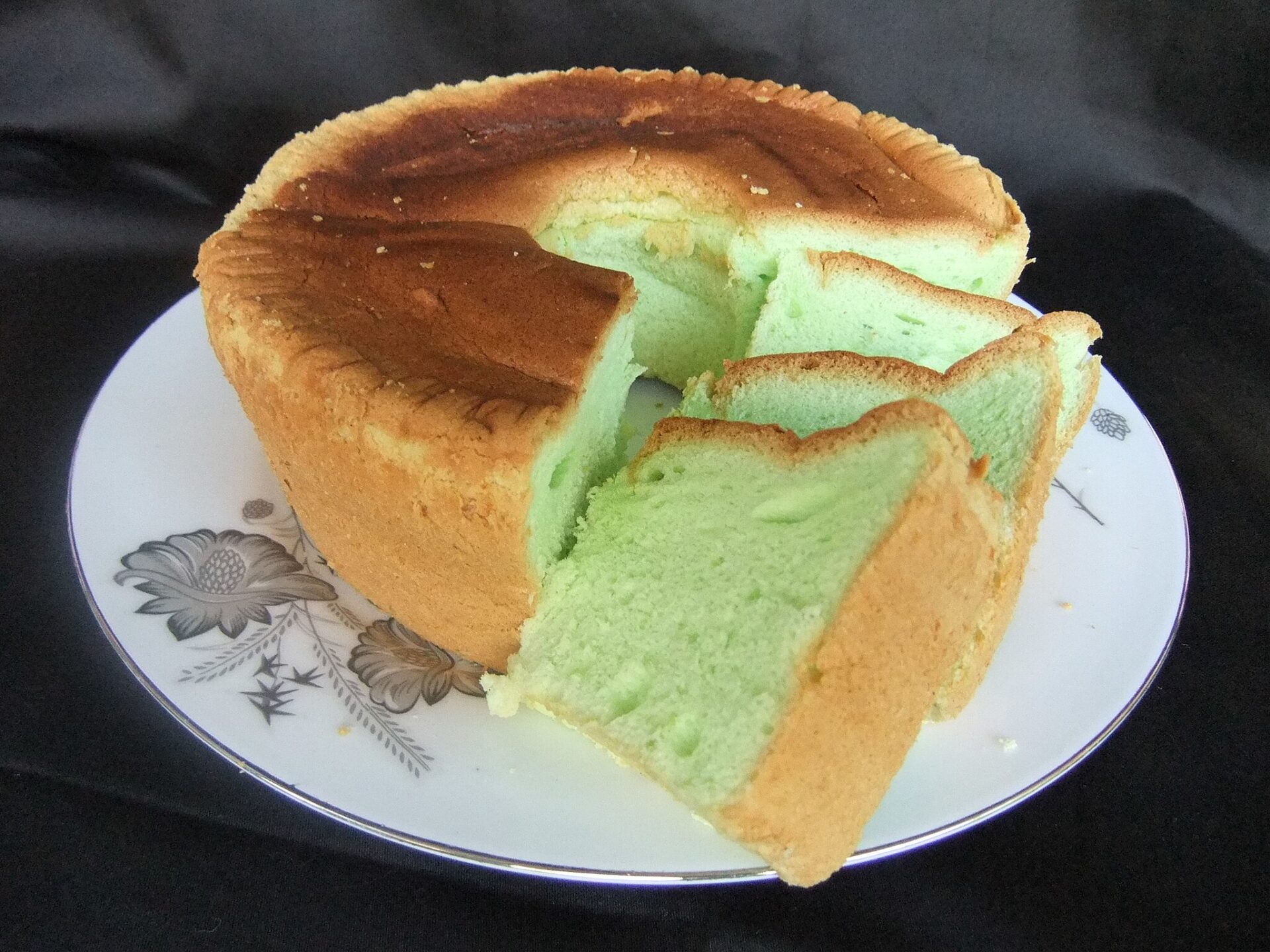
Pandan Cake is a beloved Singaporean dessert renowned for its vibrant green hue and fragrant pandan aroma. Made from pandan-infused sponge cake batter, it boasts a light and fluffy texture, offering a delightful balance of sweetness and aromatic goodness in every bite.
5 Key Facts
- Pandan Flavor: Pandan Cake is infused with the natural flavor and aroma of pandan leaves, lending it a distinct and refreshing taste.
- Vibrant Green Hue: The cake’s signature green color comes from the addition of pandan juice, giving it an appealing visual appeal.
- Light and Fluffy Texture: Pandan Cake is known for its soft and airy texture, making it a delightful treat to enjoy with a cup of tea or coffee.
- Cultural Significance: Pandan is a widely used ingredient in Southeast Asian cuisine and holds cultural significance in Singapore, often featured in desserts and savory dishes.
- Versatile Dessert: Pandan Cake is enjoyed on various occasions, from casual gatherings to festive celebrations, and is loved by locals and visitors alike for its unique flavor and aroma.
Ondeh-Ondeh

Ondeh-Ondeh is a popular Malaysian and Singaporean dessert made of glutinous rice flour filled with melted palm sugar, boiled, and coated in grated coconut. These bite-sized balls burst with sweet syrup when bitten into, offering a delightful explosion of flavors and textures.
5 Key Facts
- Glutinous Rice Flour: Ondeh-Ondeh is made from glutinous rice flour dough, giving it a chewy texture.
- Palm Sugar Filling: Each ball is filled with melted palm sugar, which adds a burst of sweetness when bitten into.
- Boiled and Coated: After being filled, the balls are boiled until they float, then coated in grated coconut for texture.
- Colorful Appearance: Ondeh-Ondeh is typically green in color due to the addition of pandan extract to the dough, making it visually appealing.
- Cultural Significance: This dessert is enjoyed during festive occasions such as Hari Raya (Eid al-Fitr) and Chinese New Year, and it holds cultural significance in both Malay and Peranakan communities.
Pulut Hitam
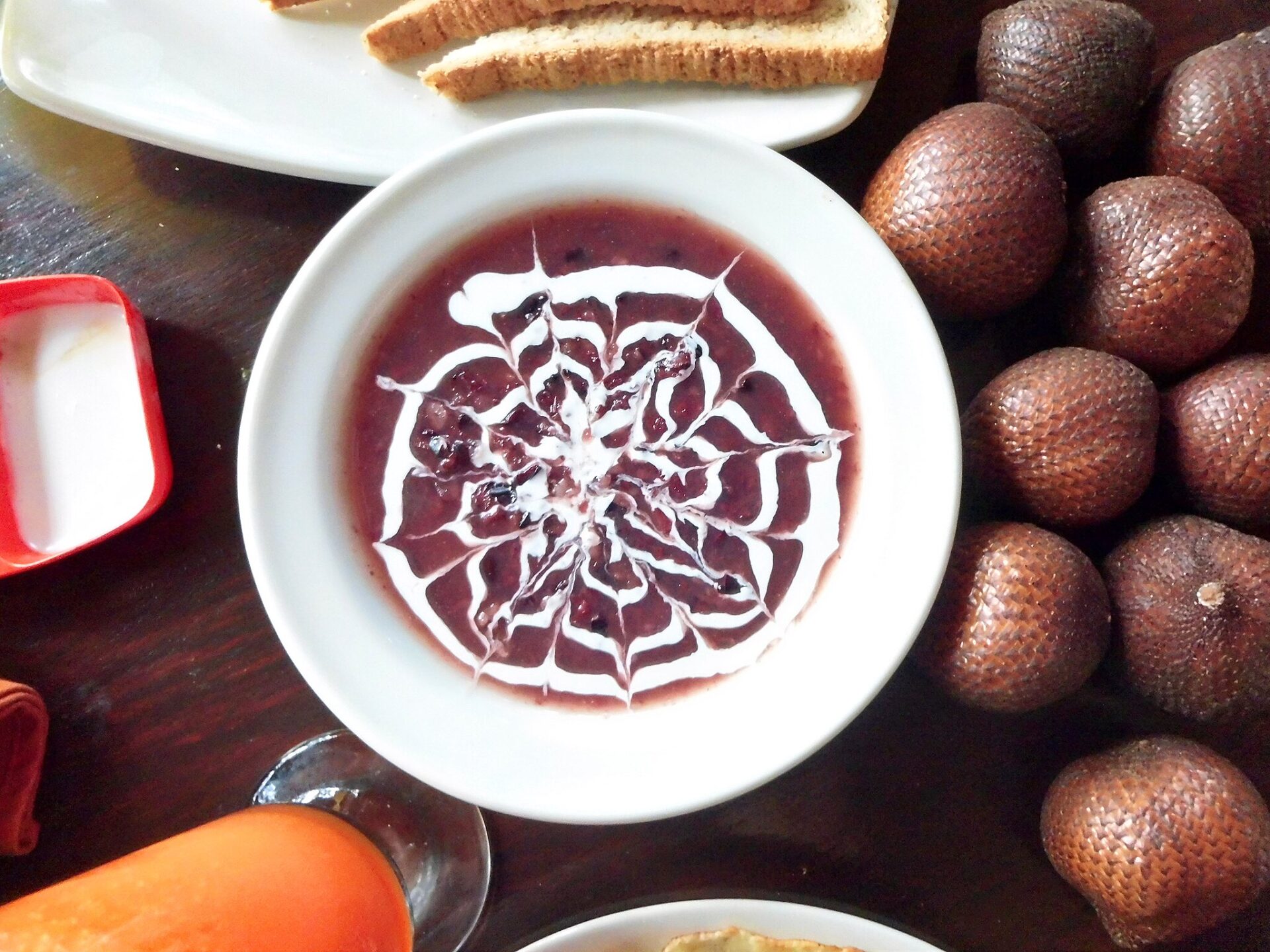
Pulut Hitam is a comforting Malaysian and Singaporean dessert made from black glutinous rice cooked with coconut milk and palm sugar. The result is a thick and sweet porridge that is often served warm, offering a comforting and satisfying treat for any occasion.
5 Key Facts
- Black Glutinous Rice: Pulut Hitam is made from black glutinous rice, which gives the dessert its distinctive color and nutty flavor.
- Coconut Milk: The rice is cooked with coconut milk, infusing the dessert with a rich and creamy texture.
- Palm Sugar Sweetening: Palm sugar, or gula melaka, is used to sweeten Pulut Hitam, adding a caramel-like sweetness to the dish.
- Warm Serving: Pulut Hitam is traditionally served warm, making it a comforting dessert, especially during cooler evenings.
- Cultural Tradition: This dessert holds cultural significance in Malaysian and Singaporean cuisine, often served during festive occasions and family gatherings as a symbol of abundance and togetherness.
Bubur Cha Cha
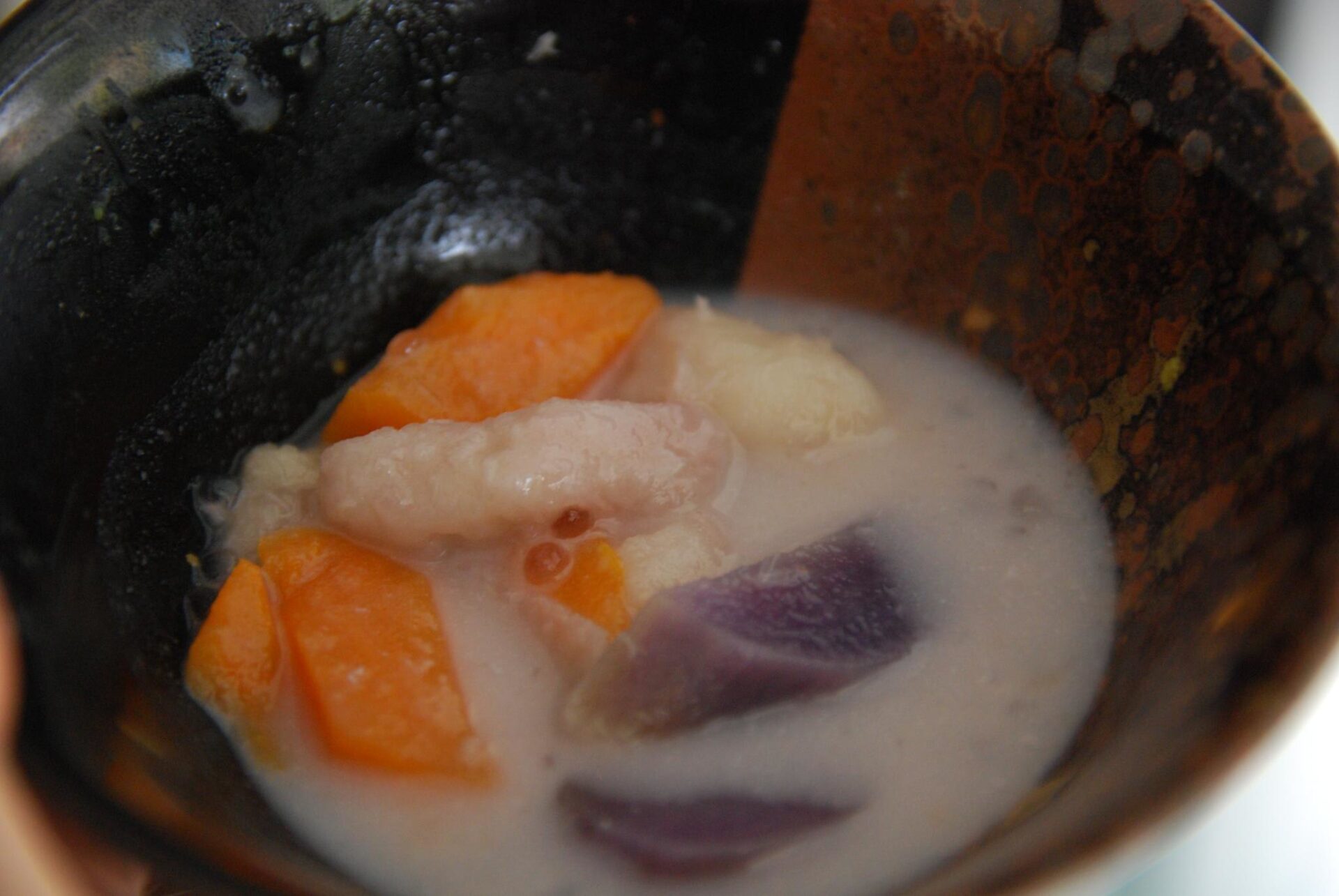
Bubur Cha Cha is a colorful Malaysian and Singaporean dessert soup made with coconut milk, sweet potatoes, taro, and sometimes bananas or sago pearls. This sweet and creamy concoction offers a delightful blend of flavors and textures, perfect for satisfying dessert cravings.
5 Key Facts
- Coconut Milk Base: Bubur Cha Cha features a creamy coconut milk base, giving it a rich and indulgent flavor.
- Variety of Ingredients: This dessert soup contains an assortment of ingredients such as sweet potatoes, taro, and sometimes bananas or sago pearls, adding a variety of textures and flavors.
- Colorful Presentation: Bubur Cha Cha is known for its vibrant and colorful appearance, making it visually appealing.
- Sweetness: Sweetened with sugar or palm sugar, Bubur Cha Cha offers a perfect balance of sweetness against the creamy coconut milk.
- Cultural Significance: Bubur Cha Cha holds cultural significance in Malaysian and Singaporean cuisine, often enjoyed during festive occasions and family gatherings as a comforting and celebratory dessert.
Putu Piring
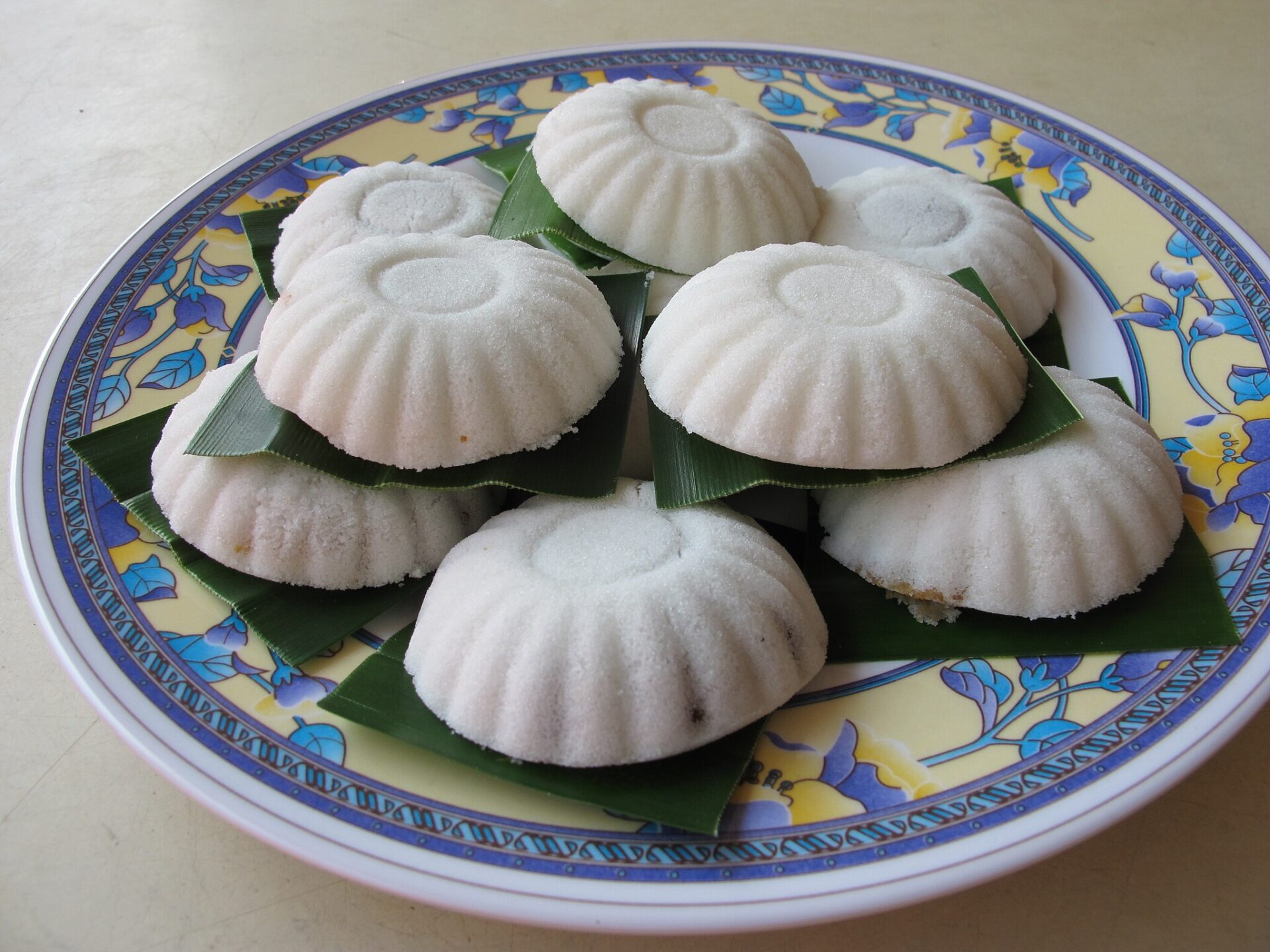
Putu Piring is a traditional Malay dessert consisting of steamed rice flour cakes filled with melted palm sugar, topped with grated coconut. These delicate and fragrant treats are often enjoyed as a snack or dessert, offering a delightful burst of sweet syrup and coconut flavor.
5 Key Facts
- Rice Flour Cakes: Putu Piring is made from a mixture of rice flour and water, shaped into small cakes before being steamed.
- Palm Sugar Filling: Each cake is filled with melted palm sugar, which provides a sweet and gooey center.
- Grated Coconut Topping: The cakes are typically topped with grated coconut, adding texture and flavor.
- Steaming Method: Putu Piring is traditionally steamed in cylindrical bamboo molds, infusing them with a unique aroma.
- Cultural Heritage: This dessert has cultural significance in Malay cuisine and is often enjoyed during special occasions, celebrations, and as a beloved street food snack.
Like this Post? Save it on Pinterest!



